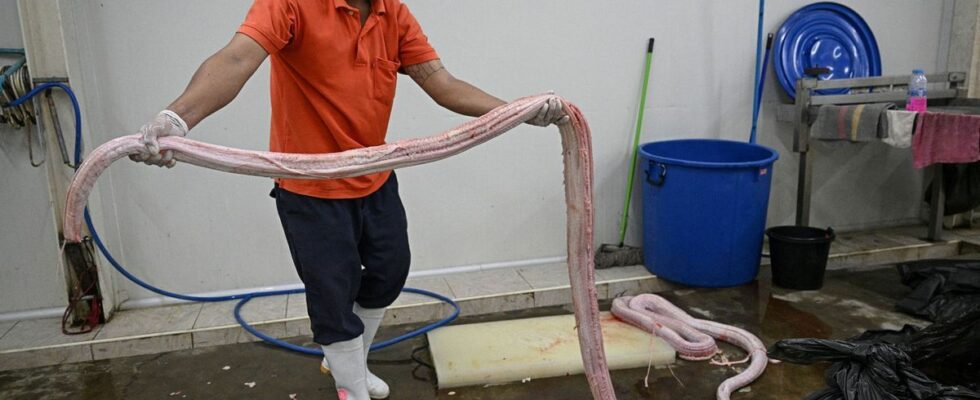Published on
updated on
Reading 2 min.
Snake steak on the menu soon? In central Thailand, a python breeder is reluctantly getting rid of the reptile’s flesh, due to lack of market, despite its nutritional potential touted by scientists.
“This is a real waste“, laments Emilio Malucchi to AFP. “I eat python meat because I know how I raised them. (..) We need to educate people about the possibilities it offers” he insists.
The nearly 9,000 snakes on Emilio Malucchi’s farm in the northern province of Uttaradit are destined for the luxury industry, which values their robust and graphic skin for the manufacture of belts, bags and shoes.
The flesh ends up in the trash, or fish farms buy it for next to nothing.
With global demand for meat on the rise, reptiles represent a hitherto overlooked option, scientists say, especially as the fight against climate change pushes us to reconsider food consumption and production habits.
“Farmed pythons could be a flexible and effective response to global food insecurity“, concluded a study published in March in the journal Nature involving 5,000 reticulated pythons and Burmese pythons from two farms in Thailand and Vietnam.
“They can survive for months without food or water, without losing any physical condition.“, and reproduce quickly,” says herpetologist Patrick Aust, one of the authors of the paper.
Limited market
Long consumed on a small scale throughout Southeast Asia, python has yet to find an international outlet despite a texture similar to chicken and a low saturated fat content.
Ruminant meat, mainly beef, has been “consistently identified as the food with the greatest impact on the environment“, according to the IPCC, a UN group of climate experts.
This impact translates into both greenhouse gas emissions and changes in land use.
The United Nations and climate activists are pushing for a more plant-based diet, but the OECD estimates that demand for meat will increase by 14% by 2032, driven by population growth in low-income regions and rising living standards in Asian countries.
At the same time, extreme weather events such as droughts are making traditional agriculture increasingly difficult in many parts of the world where people do not eat enough protein.
In 2021, protein-energy malnutrition caused nearly 190,000 deaths worldwide, according to the Global Burden of Disease study.
This paradox has prompted exploration of alternatives to meat, whether edible insects or lab-grown meats.
“Huge potential”
But these new foods are still in their infancy and the marketing of snake meat meets strict health standards, particularly in major markets such as the United States and the European Union.
Despite all the obstacles, Patrick Aust believes that snake meat still has “enormous potential”.
“You can barbecue it or simmer it in curries and stews. I like to stir-fry it until nice and crispy and eat it with a garlic butter sauce.” he explains.
But animal rights activists have criticized the conditions in which the snakes are slaughtered.
Earlier this year, PETA accused Emilio Malucchi’s farm of cruelty after secretly filming his pythons being killed with hammers before being skinned.
The breeder put up large posters on his walls explaining how to kill a python “humanely” and said his job was no different from other types of breeding.
“Farm animals are being slaughtered all over the world“, he explains. “For pythons it’s the same.“.
